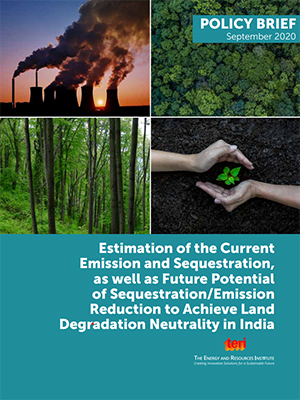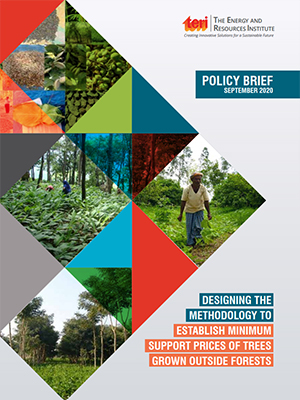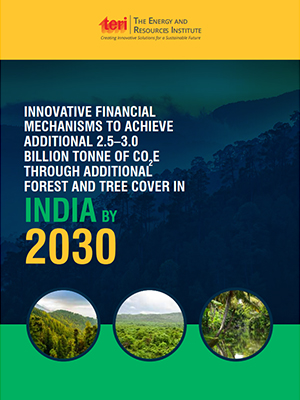Enhancing Carbon Sink through Forestry in India
India's NDC goals under the forestry sector intend to create additional carbon sink of 2.5-3 billion tonnes of CO2 equivalent through additional forest and tree cover by 2030. TERI, under this activity, aims to assess the pathways to meet this target and look into its socio-economic implications.

This activity will aim to provide pathways and strategies for the forestry sector NDC goal of creation of an additional carbon sink of 2.5 to 3 billion tonnes of carbon dioxide equivalent through additional forest and tree cover by 2030. This activity will further assess socio-economic benefits of this pathway, with particular focus on sustainable forest management, rural livelihoods, and landscape resilience.
There are lot of challenges in achieving this NDC target. The following measures can be considered to achieve this:
- The baseline year should be decided as 2015 in order to quantify India's forestry target to be achieved by 2030.
- NDC targets must be distributed to the states/UTs on the basis of Culturable Non-Forestry Area (CNFA) and forest and tree cover.
- The Carbon Neutrality Policy should be promoted at national and state level which will help in improving quality and health of forest and will also provide fair compensation to the forest dwelling communities.
- Reduction in emission through adaptation and carbon sequestration should be considered for achieving the India's NDC target of achieving 2.5 – 3 billion tonnes of CO2e.
- Also, we need to focus on the Blue Carbon Initiative of IUCN to include blue carbon to achieve their NDC targets.
- A framework should be developed which allows accounting of forest carbon addition as well as loss due to forestry activities undertaken anywhere in the country so that status of forest carbon sink in the country is known at any given time.
- Agroforestry has a huge potential to contribute toward achieving India's forestry NDC target, hence it should be promoted. Minimum Support Price (MSP) and institutional strengthening are also important factors to focus to avoid to market failure in agroforestry.
- Innovative finance mechanism through carbon market should be established at MoEF&CC level or agency recognized by Government of India to regulate the transaction at national level, and also at international level later considering success of the mechanism.
Policy Briefs
Key Quotes
Multimedia
Role of Nature-based Solutions in Carbon Sequestration: An Opportunity to be Explored
Role of Biodiversity Conservation in a Green & Resilient Post-Pandemic Economy
Development of Roadmap to Achieve Additional Carbon Sink of CO2 Equivalent Through Additional Forests and Tree Cover in India by 2030
Contribution of Agro-forestry to Achieve Additional Carbon Sink of CO2 Equivalent Through Additional Tree Cover
Estimation of the Current Emission and Sequestration Potential of Different Land-use Sectors
Scope & Potential of Coastal Ecosystems in Mitigating Climate Change
वो कार्बन जो जलवायु परिवर्तन से लड़ने के लिए है ज़रूरी
To read full thread click here













